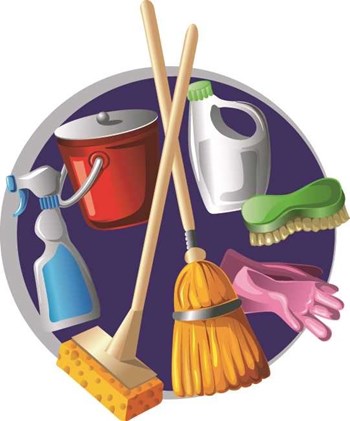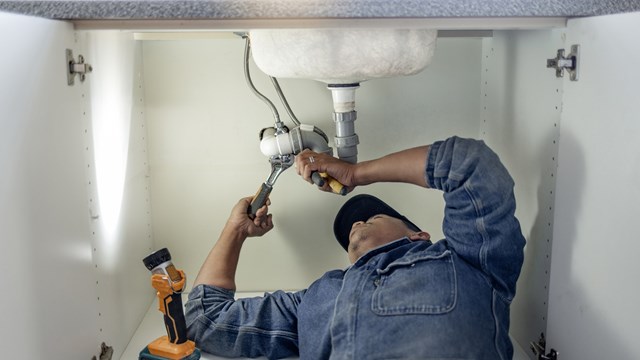
You may not realize it, but your building may be hemorrhaging money. Not in the form of disastrous lawsuits or maintenance crises like a collapsed roof or exploded boiler, but in a steady trickle coming from your method of ordering supplies and keeping tabs on small, seemingly inconsequential bills or maybe even theft.
“I have heard that associations without control can sometimes be havens for maintenance personnel who are renovating their own homes or doing work on the side outside,” notes Joanne Willoughby, vice president at Association Services of Florida, AAMC, an Associa member company. A key to avoiding such problems, she says, is to “always use a purchase order system and an updated inventory.”
Light bulbs. Cleaning chemicals. Mops. Screwdrivers. Paper towels. The list of products used by janitorial personnel is extensive, and it can be easy for board members’ eyes to glaze over when faced with inventory reports—but associations across the nation have learned the hard way that even small items can add up to big money over time.
And the financial bleeding may not be due to supplies walking out the door—but by supplies that are purchased even though they’re not needed. “An association we took over about four years ago is one of the reasons we have such a comprehensive control system,” says Anthony D’Amato, assistant director of property management at Seacrest Services in West Palm Beach.
“The supply room on every floor had about five years worth of supplies. We’re still using it; we haven’t had to order more in all this time. There had to be at least $100,000 worth of janitorial supplies in there—and the janitorial company they had ordered from went out of businesses, so we couldn’t even try to return it or get a credit.”
Know Your Community
Smaller maintenance items and things like janitorial supplies are usually ordered by a superintendent, building engineer or other authorized building staffer. When properties have a maintenance supervisor, ordering is likely to be part of that job description; but at many associations, the task is among the many responsibilities of the property manager.
D’Amato says that creation of an inventory system is his first step at every community the company adds to its portfolio. “We look at the property, and see what its specific cleaning needs are, and create a base inventory,” he says. For example, a community with young families may have a playground, “and people want it to be as germ-free as possible.” That community’s supply list will include “green” cleaning products that will disinfect the playground equipment, which is also hosed down regularly to keep things clean.
After a couple of months at a property, he says, a manager will have a good sense of what’s actually being used, and in what quantity. With the baseline established, unusual fluctuations will be obvious and worth a closer look.
“To control the inventory, you should have a place where all materials and tools are stored, behind lock and key, that only the manager or supervisor have the key to, or maybe a couple of directors, so that things can’t grow legs and walk out,” suggests Ronald DiCrescenzo, CPA, of DiCrescenzo and Company, a certified public accounting firm in Deerfield Beach. And with today’s technology, he adds, “you could even have a keypad to operate the locks that corresponds to each person, so you know who was in there, and for how long.”
Sometimes, DiCrescenzo says, association boards or managers “are just not thinking, and the room is open to everybody,” leading to potential pilferage. There are situations where staff may sell the supplies, or take them for personal use. “The main thing,” he stresses, “is to keep it under lock and key.”
Good access control can avoid more than theft, D’Amato notes. Product can also be lost due to simple waste, as when employees use more cleaning products than are needed. At Century Village, for example, the janitorial supervisor mixes up and distributes chemical solutions to more than two dozen janitors, which helps control both the quantity and quality of product being used. Seacrest, he adds, maintains a list of approved chemicals, to avoid the purchase of chemicals that might be harmful to them, the environment, or the property.
To avoid having supplies simply slip away—or having mountains of unused product pile up—DiCrescenzo also recommends keeping a frequent eye on the contents of the supply room. “You should do a physical inventory at least quarterly, and keep track on a perpetual basis, either handwritten or on the computer,” he suggests. “You match the physical inventory up with the perpetual inventory,” he says, checking to see that the amounts recorded each quarter are consistent.
Create a Paper Trail
Paper trails are easy to create if policies and systems are put into place—and followed. “Keep track of every time something is taken out,” DiCrescenzo recommends. “Have a form, and give to the accounting department to keep track. That also helps when it’s time to order new things.”
Seacrest, D’Amato says, keeps a tight rein on the supply chain, conducting a written inventory every month, which is included in the manager’s report to the board right along with the financials. “All the equipment is listed, too, as well as the condition it’s in,” he says. That can help when equipment is reported as worn out or missing and in need of replacement.
Keeping a constant eye on supplies, he notes, can also help to uncover other problems. “We also have a service order system, so when people call in, for example, to say that a light is out, the service order is generated, there’s a work order form, and the staff has to write on it what they used. So if they’re changing the same light bulb every week, we know there’s a problem.”
The trick is to create a system that will actually be used consistently. “Once we have the inventories, we match them up to our financials every month, to make sure we’re in line with our budget, “D’Amato says. “In the summer months, you might not use as much of certain supplies when the snowbirds go back up north …. But in the winter, when more people come in, the use of toilet paper and so forth goes up. So we want to look at inventory to see if it fluctuates from month to month.”
Most regularly-ordered items are usually purchased in similar quantities every time, so an order for a large quantity that differs from past repeated orders may also be an indicator of waste or fraud. Special occasions may arise, but a wild fluctuation in the ordering of materials or supplies could be an indication of theft. “A mistake can be made and someone can forget to log out supplies once—but should it happen more than once, that is a red flag,” Willoughby says. “Once the person who puts together the list of supplies to be ordered starts changing from the normal supplies, that is another red flag. The manager should question why different supplies are being ordered and where they will be used.
Checks & Balances
In order to monitor cash outflow and ensure that jobs and supplies are bid out properly, the property manager or managing agent should establish a set of purchasing principles. First, of course, are considerations of price and quality. The cheapest option may not always be the best one, but a residential building is a business, and as such has a vested interest in getting the lowest price possible for goods and services. Secondly, no shareholder/owner, employee, former employee or members of their immediate family should be used as a supplier of any materials, supplies, equipment or services. Also, no owner, employee, or family member should be given any materials, supplies or services at any price under any circumstances without the consent and approval of the manager.
Also, management companies generally advise their building staff members to get at least three competitive bids for any item over a set limit—$1,000, for example—unless the property manager and board treasurer both agree that competitive bidding isn't absolutely necessary. That could be because an emergency requires an item to be purchased immediately, or because the present supplier is working out well and offers competitive pricing, or—unlikely as it may sound—because there is simply only one supplier who provides a particular good or service.
“All supplies and equipment should be purchased through a purchase order system,” Willoughby says. “That allows the manager to have better control on what is being ordered. A copy of that list, with the P.O. number should be attached to the packing slip and the invoice when the payment is requested.” The use of purchase orders, she notes, creates a built-in system of checks and balances.
“Be conscientious as to what products your association has used in the past and the quantity of those products,” she says. “If your association has never purchased certain light bulbs or construction materials, then question where and why these supplies are needed. The locations of all supplies used should be on the purchase order and then that location should match up to the work order/service request.
Property managers and accountants agree that no major purchases or bulk purchases should be made until plans for those purchases are reviewed by the building's finance committee and approved by the board. All purchases made out of reserve accounts should be approved by the finance committee and by the board.
It is important to clearly define the financial authority of and outline various policies for the manager and staff to fulfill the purchasing, receiving and inventory control functions. It is the board's responsibility to outline the controls needed while the property manager is to be held accountable for implementing and conforming to those requirements. The more oversight an association has in place, the less opportunity there is for people to take advantage and do something dishonest.
Just as anyone would do with their own personal financial accounts, a building’s financials and purchasing practices should be checked and double checked to make sure they’re getting exactly what they pay for.
“You have to have a good system, especially with the way the economy is at this time. Everyone is trying to pinch pennies and make sure they’re getting the most for the buck,” D’Amato says.
Christy Smith-Sloman is a staff writer for The South Florida Cooperator. Associate editor Pat Gale also contributed to this article.






Leave a Comment